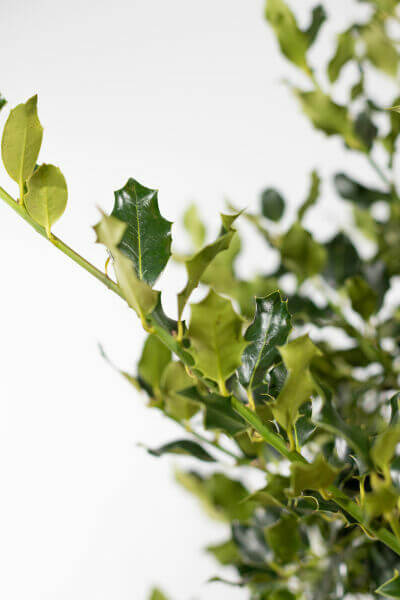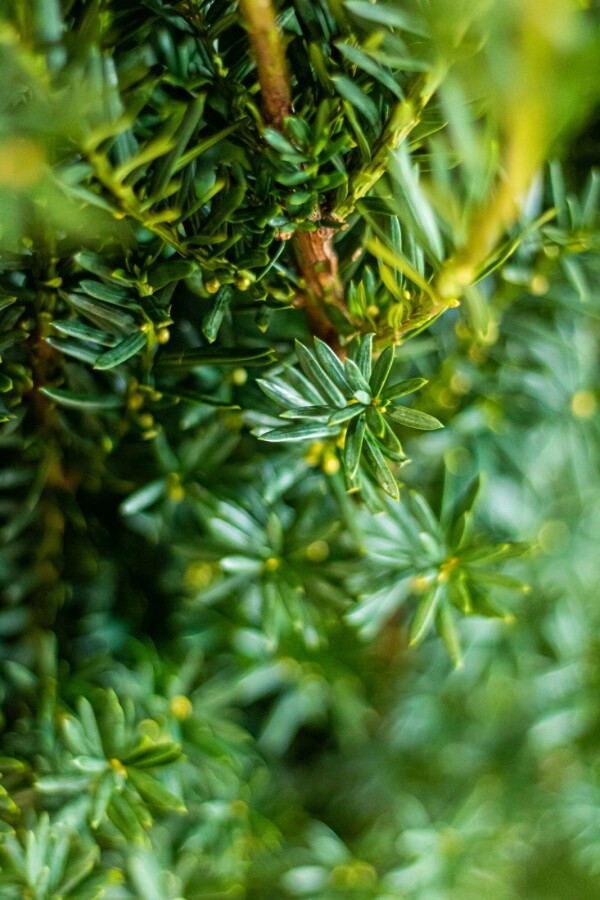Best Hedging Plants For Lush Borders
Best Hedging Plants For Lush Borders
Blog Article
Best Hedge Plants For Small Spaces
Improve your garden's allure with lush hedge ranges such as Yew (Taxus), Thuja, Laurel, Photinia, and Bamboo, commemorated for their structural stability and environmental advantages.
Yew and Thuja provide evergreen protection and winter durability, while Laurel offers fast development and broad, fragrant leaves.
Photinia includes seasonal charm with its dynamic red foliage, and Bamboo provides a low-maintenance, serene atmosphere.
These hedges enhance air quality, decrease sound, and develop tranquil, private areas.
Correct planting, spacing, and upkeep make sure vigorous development and ecological harmony.
Explore how these lavish ranges can elevate your garden's charm and wellness.
Secret Takeaways
Change Your Garden With Lush Hedge Varieties
- Select Yew for its dense, evergreen growth and exceptional durability.
- Opt for Laurel for its fast growth and broad leaves, guaranteeing fast personal privacy.
- Choose Photinia for its vibrant seasonal foliage, which turns a striking dark red.
- Use Bamboo for a low-maintenance, winter-hardy hedge with visual appeal.
- Area plants 2-3 per meter and prune frequently for optimum development and health.
Popular Hedge Plants
When changing a garden with lush hedge varieties, it's important to consider popular hedge plants such as Yew, Thuja, Laurel, and Photinia due to their unique attributes and benefits.
Yew (Taxus) is highly respected for its durability and dense, green growth, making it a prime option for enduring landscapes.
Thuja is noted for its evergreen foliage and robust winter season durability.
Photinia includes seasonal vibrancy with red leaves that darken gradually, creating vibrant visual appeal.
Laurel provides fast growth and fragrant, broad leaves, suitable for fast privacy.
Additionally, Bamboo is an outstanding choice for ambiance, offering a low-maintenance, winter-hardy alternative that boosts the garden's visual with its stylish, swaying canes.
These selections deal with a variety of horticultural needs and choices.
Advantages of Garden Hedges
Garden hedges provide a wide range of benefits, making them an important addition to any landscape. These natural barriers are affordable to implement and provide substantial wind security, enhancing air blood circulation and adding to noise decrease. The dense foliage of hedges like Thuja and Beech makes sure privacy by obstructing visibility, producing a tranquil and remote environment.
Hedges likewise play a crucial function in microclimate policy, supplying a steady environment that cultivates plant development and lessens temperature changes. Their intricate leaf structures filter toxins, improving air quality and adding to a healthier garden environment.
Furthermore, hedges stand out in noise decrease, absorbing and deflecting acoustic waves to lower ambient noise levels. This dual performance of offering both visual and acoustic privacy boosts the general serenity and visual appeal of any garden.
Planting and Maintenance Tips
For an effective hedge, careful preparation of the planting area is vital. Ensure the soil has appropriate pH and drain to support strong root advancement.
Space the plants appropriately for the picked species. Water the hedge frequently during its initial growth phase, adjusting as needed with seasonal changes.
Execute a methodical insect control and disease prevention technique, using chemical or organic treatments when required. Routinely examine for aphids, mites, and fungal infections.
Apply mulch to retain moisture and reduce weeds. Seasonal pruning promotes thick growth and air flow, important for plant health.
Following these guidelines will assist you cultivate a lively, properly maintained hedge that boosts the charm of your garden.
Spacing and Trimming Guidelines
Spacing and Cutting Standards
Proper spacing and trimming are vital for cultivating healthy, aesthetically appealing hedges. Sufficient spacing ensures each plant gets adequate nutrients, light, and airflow.
Follow these standards for ideal hedge maintenance:
- Spacing: Position hedge plants 2-3 plants per meter to motivate robust growth.
- Pruning Strategies: Regular pruning is essential for keeping wanted hedge height and shape. Trim new growth in summertime and cut back older wood throughout winter season.
- Seasonal Care: Adjust cutting schedules and approaches according to seasonal requirements to guarantee plant health.
- Hedge Height: Routinely screen and cut to preserve the desired hedge height and accomplish consistent looks.
Sticking to these actions will ensure your hedge grows, enhancing both the appeal and performance of your garden.
Choosing the Right Hedge
Selecting the Right Hedge
Picking the appropriate hedge involves examining factors such as mature height, foliage density, and ecological strength. Successful hedge plant selection requires understanding each species' growth attributes and site-specific adaptability.
For instance, Yew (Taxus) uses excellent longevity and thick development, while Thuja is notable for its winter durability. Furthermore, thinking about upkeep requirements is crucial; fast-growing species like Laurel or Privet demand regular trimming, whereas low-maintenance choices like Bamboo or Ivy may be more effective for those looking for minimal upkeep.
Environmental elements such as soil type, light accessibility, and moisture conditions must likewise direct the selection process. This cautious approach ensures the chosen hedges will thrive, providing both functional and visual advantages to the garden landscape.
Delivery and Planting Recommendations
To guarantee your hedge plants prosper, they must be delivered by specialized couriers and planted promptly upon arrival.
Follow these essential actions for effective planting:
- Soil Preparation: Enhance the soil with raw material to enhance drain and nutrient content.
- Planting Depth: Create a trench two times the width and equal to the depth of the root ball.
- Watering Techniques: Water completely after planting, keeping the soil regularly moist but not saturated.
- Mulching: Apply a layer of mulch to maintain moisture and suppress weeds.
Consumer Assistance and Service
Given the vital role of prompt support in horticultural pursuits, our customer assistance team is available six days a week through telephone, e-mail, and social media to use professional guidance and promptly deal with any issues. Their commitment to quick reaction times ensures client complete satisfaction by solving inquiries related to plant health, ideal planting approaches, and maintenance schedules.

Action Time
Within 24 hours
This detailed support group, reinforced by an excellent 9.3/ 10 customer rating, highlights our dedication to enhancing the gardening experience for every single client.
Frequently Asked Concerns
For How Long Does It Take for Hedge Plants to Develop?
Hedge plants typically need one to three years to end up being fully developed, with the exact duration differing by species and growing conditions.
Efficient care throughout this vital duration is essential for robust growth. Constant watering, alert weed control, and appropriate fertilizer application are essential in promoting strong root advancement.
For example, fast-growing types like Laurel might establish quicker, while slower-growing ranges such as Yew may take longer. Diligent upkeep speeds up the facility process, leading to healthy and dense hedges.
What Are the Best Hedge Plants for Privacy?
The concern of the finest hedge plants for privacy involves assessing evergreen and deciduous choices.
Evergreen hedges like Thuja, Laurel, and Cypress supply year-round protection, ensuring continuous privacy.
In contrast, deciduous hedges such as Beech provide seasonal privacy, shedding leaves in chillier months.
Secret upkeep pointers for personal privacy hedges consist of routine cutting, fertilizing in spring, and correct spacing-- typically 2 to 3 plants per meter.
Additionally, consistent watering and thorough weed elimination are vital for promoting healthy, thick development.
Can Hedge Plants Bring In Wildlife to My Garden?
Yes, hedge plants can draw in wildlife to your garden by offering vital benefits like shelter, food, and nesting sites, thereby enhancing regional biodiversity. Yew, holly, and laurel are excellent for bring in birds, while ivy supports a range of bugs.
However, it is necessary to keep in mind that there are some disadvantages, such as increased maintenance to handle insects and regular maintenance. Carefully selecting and keeping hedge varieties can help stabilize these disadvantages and benefits, eventually promoting a vibrant and sustainable ecosystem in your garden.
Exist Any Blooming Hedge Plants Available?
Yes, there are flowering hedge plants offered that can enhance the appeal of your garden.
For example, Elaeagnus, likewise understood as Olive Willow, produces fragrant white flowers in the fall, including a touch of elegance.
Photinia, another popular option, showcases vibrant red leaves that develop into a rich green, producing a vibrant visual impact throughout the seasons.
To make sure these plants flourish, it's vital to practice appropriate pruning strategies and seasonal maintenance, such as trimming brand-new growth in the summertime and cutting down in the winter.
These steps will assist keep the health and aesthetic appeal of your flowering hedges.
How Do I Avoid Bugs in My Hedge Plants?
To prevent insects Article source in hedge plants, use natural pest control methods and preserve correct hedge care. Introduce useful bugs like ladybugs, which prey on damaging pests, to produce a well balanced environment.
Regularly examine your hedges for indications of infestation and immediately get rid of any afflicted parts to avoid the spread. Ensure the health of your hedges by applying balanced fertilizers and providing adequate water.
Utilize mulching to keep soil moisture and proper spacing to decrease plant stress and promote robust growth. These practices collectively help in reducing pest issues and maintaining a healthy hedge.
Conclusion
In essence, choosing the ideal hedge ranges such as Yew, Thuja, and Laurel can change any garden into a relaxing sanctuary. These plants offer year-round greenery, enhance visual appeal, and deal useful benefits like noise reduction and wind defense.
Correct planting methods, accurate spacing, consistent watering, and seasonal cutting are crucial for ideal growth.
Trustworthy delivery services and expert consumer assistance ensure a smooth experience from purchase to planting, making it simpler than ever to elevate your outside space.
Garden hedges use a plethora of benefits, making them a valuable addition to any landscape. These natural barriers are cost-efficient to implement and supply considerable wind protection, boosting air flow and contributing to sound decrease. The thick foliage of hedges like Thuja and Beech guarantees privacy by obstructing visibility, producing a remote and peaceful environment.

Pruning Techniques: Regular pruning is essential for keeping preferred hedge height and shape. Trim brand-new growth in summer and cut back older wood throughout winter.
Report this page